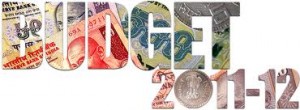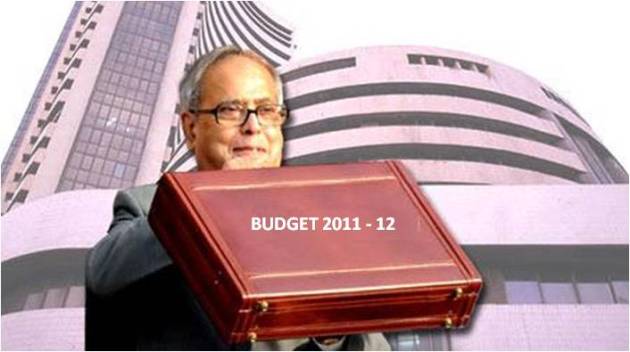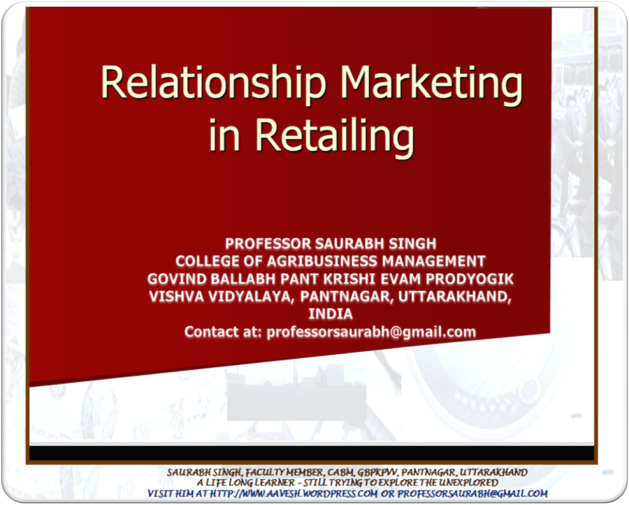Saurabh Singh
JUSTIFY PAYMENT OF NON COMPETE FEE, SEBI TELLS E. LAND
The Securities & Exchange Board of India, or SEBI, has told a South Korea’s $7-billion textile chain E. Land, which in process of acquiring Mudra Life Style by an open offer, to justify the payment of a non-compete fee of 25% to the promoters of Mumbai-based Mudra Lifestyle.
INTRODUCTION OF STAKEHOLDERS
E. LAND TEXTILE CHAIN OF SOUTH KOREAN ORIGIN
E. Land is a South Korean $ 7 Billion Textile Chain. The textile house is in midst of the process of taking over Mudra Lifestyle. E.Land Group (is a South Korean conglomerate headquartered in Chanjeon-dong Mapo-gu Seoul, Korea. It started as a 6 sqm small clothing shop on a fashion street in front of Ewha University in Sinchon in 1980. E.Land Group became a USD 7 billion group of companies, creating the phrase “Myth of 6 sqm (hangul)”. E.Land Group now takes part in retail malls, restaurants, hotels and construction businesses as well as its cornerstone, fashion apparel business. It has operations worldwide through its subsidiary E-Land World, including China, Hong Kong, Vietnam, the United States and Europe. History In the 1980s, E. Land Group revolutionized the retail channel by pioneering new markets using a franchising system. Franchising system is one of the most profitable forms of retail distribution due to its low initial investment requirement when opening new stores. Its first ever brand was called “England”, which later changed to “E-Land” due to restrictions on trademark registration. During the Asian financial crisis of 1997, E. Land Group successfully carried out several corporate reform initiatives, including corporate restructuring, overhaul of its finances and transformation of its management system. As a result, E. Land Group became the 37th largest corporation in Korea (excluding SOE’s) with assets totaling over 2 billion USD as of the end of 2005. E. Land Group transformed Korean apparel retailing, which was historically divided into high-priced department stores and low-priced traditional markets, by creating a new medium-priced market using street shops. This market has now grown to over USD 20 billion in 2006. E. Land Group currently takes part in fashion apparel, hyper-mart retail, fashion outlet malls, department stores, hotels and restaurant businesses. Vertical Integration It currently focuses on vertical integration of production and distribution of consumer goods that include apparel, groceries and house wares. Products are sold through two different channels, namely, approximately 5,000 franchise stores and E. Land Group owned stores consisting of 25 premium fashion discount stores, two department stores and 32 discount stores. The strength of E.Land Group lies in its ability to generate synergies between its fashion and retail businesses, and this strategy being implemented through a business portfolio that includes infant wear, children’s wear, women’s wear, sportswear and underwear and a multitude of channels such as outlets, department stores and super supermarkets. Retail E. Land Group is currently the second largest retailer in Korea based on number of stores as of September 2006 (Source: Korea Rating). The Group’s current retail business comprises Homever, Kims Club, NC Department Store, NewCore Outlet and 2001 Outlet. 2001 Outlet In 1994, E.Land Group introduced the first outlet in Korean market by opening the first store of 2001 Outlet. It took a form of mullti story outlet stores with groceries, houseware and apparel. NC Department Store & NewCore Outlet In 2003, E.Land Group purchased a 75% stake in NewCore, a department store operating in 25 different locations in Korea. Following the acquisition, NewCore was transformed to and operated as two department stores and 15 fashion premium outlets. Homever (ex. Carrefour) In April 2006, E. Land Group acquired the entire South Korean operations of Carrefour which operated 32 discount stores. Carrefour Korea, despite its global presence and experiences overseas, struggled to understand the local Korean culture. Carrefour was rebranded to Homever by E. Land Group after the acquisition. The acquisition moved E. Land Group from 6th to 2nd largest discount/outlet operators with respect to total number of stores. Using experiences accumulated from prior operations of 2001 Outlet and NewCore Outlet, E. Land Group successfully integrated its winning strategy to revive the stores after the acquisition. During 2007, E-Land received media attention regarding new Korean non-regular protection laws. E-land laid off more than 900 non-regular female cashiers at its affiliate retailers, Homever and New Core, just before the law went into effect on July 1 2007. The group, instead, outsourced their jobs to workers from temporary agencies. The new law requires a company to grant its non-regular employees regular status after they have worked with the company for two years. On 14 May 2008, the British retail group Tesco, which already operated in Korea, agreed to purchase 36 hypermarkets with a combination of food and non-food products from E-Land for $1.9 billion (976 million pounds) in its biggest single acquisition, making Tesco the second largest retailer in the country. The majority of the E-Land stores formerly belonged to French retailer Carrefour before 2006 and most of the stores will be converted to Tesco Homeplus outlets. Tesco’s South Korean discount store chain, Home Plus, currently has 66 outlets.
MUDRA LIFESTYLE BUSINESS
Mudra Group started its operations in 1986 and is in the textile industry having facilities for fabrics & garments manufacturing, processing, design development and sampling etc. It manufactures fabrics and garments for domestic and export market. The brand MUDRA has built a strong goodwill for itself in the domestic market and commands a premium. It’s gradually moving towards garment manufacturing mainly in the designer shirts and ladies wear segments to capitalize on the huge opportunity unleashed by the removal of quotas.
MUDRA LIFESTYLES’ PRODUCT PORTFOLIO CONSISTS OF: •Finished fabric •Processing •Garments Mens Wear :Shirts Ladies Wear : Tops, Skirts Kids Wear PROMOTERS: Mr. Murarilal Agarwal, aged 49 years, Chairman and Managing Director, is a commerce graduate. He is the founder of the MUDRA group and has over 25 years experience in various facets of the textile industry. Shri Agarwal, as Executive Chairman, overlooks the entire working and affairs of the company’s management. Mr. Ravindra Agarwal, aged 46 years, Joint Managing Director, has done his M.A. (Gold Medalist) from Mumbai University. He has experience of over 18 years in the textile industry. He heads the Finance and Marketing Functions of the company. He is supported by a team of experienced professionals. Mr. Vishwambharlal Bhoot, aged 65 years, is a matriculate and has experience of over 38 years in the textile industry. He controls the company’s administration and accounting functions. He is supported by a team of experienced professionals.
THE BOARD COMPRISES THE FOLLOWING DIRECTORS:
S. No.NameDesignation 1Mr. Murarilal AgarwalChairman and Managing Director 2Mr. Ravindra AgarwalJoint Managing Director 3Mr. Vishwambharlal K. BhootExecutive Director 4Dr. Surendra Ambalal DaveIndependent Director 5Mr. Subhash Chandra BhargavaIndependent Director 6Mr. S. P. Pandian Independent Director
SECURITIES AND EXCHANGE BOARD OF INDIA SECURITIES & EXCHANGE BOARD OF INDIA (frequently abbreviated SEBI) is the regulator for the securities market in India. It was formed officially by the Government of India in 1992 with SEBI Act 1992 being passed by the Indian Parliament. Chaired by C B Bhave, SEBI is headquartered in the popular business district of Bandra-Kurla complex in Mumbai, and has Northern, Eastern, Southern and Western regional offices in New Delhi, Kolkata, Chennai and Ahmadabad. ORGANIZATION STRUCTURE: Chandrasekhar Bhaskar Bhave is the sixth chairman of the Securities Market Regulator. Prior to taking charge as Chairman SEBI, he had been the chairman of NSDL (National Securities Depository Limited) ushering in paperless securities. Prior to his stint at NSDL, he had served SEBI as a Senior Executive Director. He is a former Indian Administrative Service officer of the 1975 batch…
THE BOARD COMPRISES
NameDesignationAs per C B BhaveChairman SEBICHAIRMAN (S.4(1)(a) of the SEBI Act,1992) KP KrishnanJoint Secretary, Ministry of FinanceMember (S.4(1)(b) of the SEBI Act, 1992) Anurag GoelSecretary, Ministry of Corporate AffairsMember (S.4(1)(b) of the SEBI Act, 1992) Dr G Mohan GopalDirector, National Judicial Academy, BhopalMember (S.4(1)(d) of the SEBI Act, 1992) MS SahooWhole Time Member, SEBIMember (S.4(1)(d) of the SEBI Act, 1992) Dr KM AbrahamWhole Time Member, SEBIMember (S.4(1)(d) of the SEBI Act, 1992) Mohandas PaiDirector, InfosysMember (S.4(1)(d) of the SEBI Act, 1992) Prashant SaranWhole Time Member, SEBIMember (S.4(1)(d) of the SEBI Act, 1992)
FUNCTIONS AND RESPONSIBILITIES SEBI
SEBI has to be responsive to the needs of three groups, which constitute the market: 1.The issuers of securities 2.The investors 3.The market intermediaries SEBI has three functions rolled into one body quasi-legislative, quasi-judicial and quasi-executive. It drafts regulations in its legislative capacity, it conducts investigation and enforcement action in its executive function and it passes rulings and orders in its judicial capacity. Though this makes it very powerful, there is an appeals process to create accountability. There is a Securities Appellate Tribunal [SAT] which is a three-member tribunal and is presently headed by a former Chief Justice of a High court – Mr. Justice NK Sodhi. A second appeal lies directly to the Supreme Court. SEBI has enjoyed success as a regulator by pushing systemic reforms aggressively and successively (e.g. the quick movement towards making the markets electronic and paperless rolling settlement on T+2 basis). SEBI has been active in setting up the regulations as required under law.
MUDRA LIFESTYLE: STOCK PROCES AS ON JANUARY 28, 2010
BSE : Jan 28, 17:30 Open Price57.00Volume351495 High Price59.0052 Wk High62.80 Low Price53.00 52 Wk Low33.50 Prev. Close57.65 Open Price58.00Volume293989 High Price58.0052 Wk High59.95 Low Price53.85 52 Wk Low28.05 Prev. Close57.50 NSE: Jan 28, 17:30
THE SITUATION
In a first-of-its-kind deal in the local textile sector, the South Korean fashion and garment conglomerate had agreed to and is in the process of acquiring the promoter’s stake in Mudra Lifestyle and also take management control. The Korean firm has already acquired a 25% stake in the company and appointed directors on its board. It has also unveiled an open offer to buy 20% equity from shareholders at Rs 60 per share. It would pay Rs 75 a share to the company’s promoters for a controlling stake. The differential pricing to the promoters is on account of a non-compete fee. An acquirer can pay a seller non-compete fee of up to 25% of the price offered to shareholders in an open offer. Anything more than 25% has to be included in the open offer price. According to officials in investment banks, SEBI has asked SBI Caps, which is managing the open offer, to justify a higher or differential price in the form of non-compete fee to the promoters. “The regulator is still examining the submission. The company had filed for an open offer approval in October. Payment of non-compete fee is increasingly turning out to be a contentious issue with the market regulator vetting several such cases. This may also have to do with the recent recommendation of a committee on takeovers, which said non-compete fees should be done away with as according to it promoters were the sole beneficiaries. “SEBI is hostile towards non-compete fee as it is looking at reforming this aspect of companies’ takeover. More often than not it short-changes minority shareholders. While SEBI allows this to go up to 25%, under the Indian Contract Act it is invalid. However, the Securities Appellate Tribunal has said that if the law allows it, then it is justified. Merchant Banker to the ISSUE:SBI Caps or SBI Capital Markets Legal Arm of Merchant Banker: Amarchand Mangaldas Usual Time Taken by SEBI to settle Such Cases: One Month Time being Consumed by SEBI in this Case: It has already been nearly four months since the Company had filed for an open offer approval in October 2010 ISSUES INVOLVE 1. SEBI is hostile towards non – compete fee. 2. While SEBI allows it to go up to 25 per cent, in case of Indian Contract Act it is invalid. 3. Securities Appellate Tribunal says that if law allows, then it justified. But in majority of case ‘it is control premium’ that is paid in disguise of ‘non – compete fee’.
VIEW OF AN ECONOMIC LAW PRACTIONER
SEBI does not have much jurisdiction to decide whether the fee is justified, if it is not above the prescribed limits.
DEAD FISH IN THE POND
There is an old saying regarding a dead fish in the pond. In same manner or on the similar lines one of recent and matching issue was of acquiring of Mysore Cements. In this case SEBI had asked the acquirers not to pay differential prices to promoters at the expense of other Share Holders. The Regulator was of the view that payment of non – compete fee was not justified in this case as company was classified as a sick company.
E. LAND GROUP OWNS IN EXCESS OF 60 BRANDS IN KOREA
Casual •Brenntano •Underwood •Hunt •R.Athletic •Teenie Weenie •Who.A.U •Shane Jeans •So Basic •There’s •Coin •C.o.a.x •Prich •G-Star Deco & Netishion (Women’s) •Deco •Ana Capri •Telegraph •XIX •Dia •EnC •96 New York •A6 Women, kids, underwear and accessories •E-Land Junior •Underwood School •Ohoo •Little Brenn •Roem Girls •The Day Girl •Cocorita •Usall •New Golden •Hunt Kids •Caps •Vianni Kids •Cheek •Entetee •Celden •Hunt Innerwear •The Day Underwear •Eblin •Petit Lin •Body Pop •Roem •The Day •2Me •Teresia •Fiorucci •Clovis •Lloyd •Clue •Vianni •Eco Mart •Paw in Paw •OIX •Vicman •OIX Milano •NIX21 •Marie Claire •OST •Beall Eland also operate the following global brands under license •Berghaus •Ellesse Source: http://en.wikipedia.org/wiki/E-Land accessed on Jan 29, 2011 at 1237 Hours IST.
TERMS DEFINED NON –
COMPETE FEE
This fee is a differential price being paid to promoters over and above the price being paid to ordinary shareholders.
TRADITION & REASON BEHIND NON COMPETE FEE
This fee is paid by the acquirer to ensure that the former promoters of the company do not compete directly in same line of business for specified time period.
ACCEPTED AMOUNT
An acquirer can pay seller a Non – Compete Fee of up to 25 per cent of the price being offered to share holders in the Open Offer of Acquisition. Anything more than 25 per cent has got to be included in the open offer.
ALWAYS YOURS — AS USUAL — SAURABH SINGH















Impressions of Visitor & Few Replies